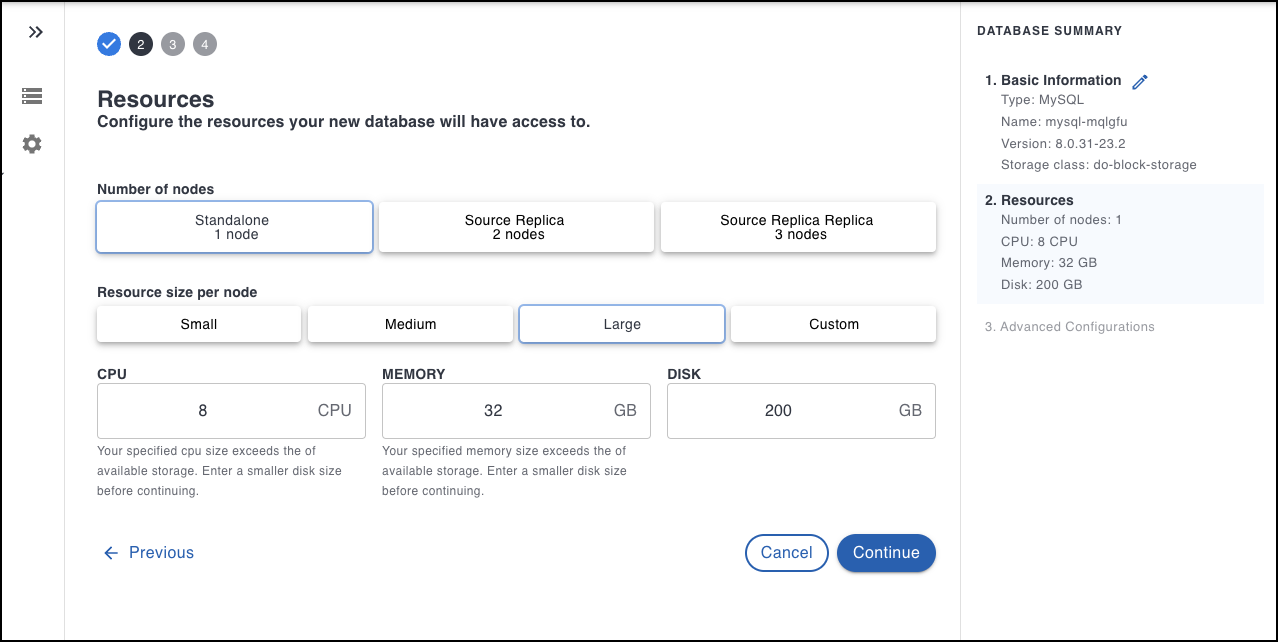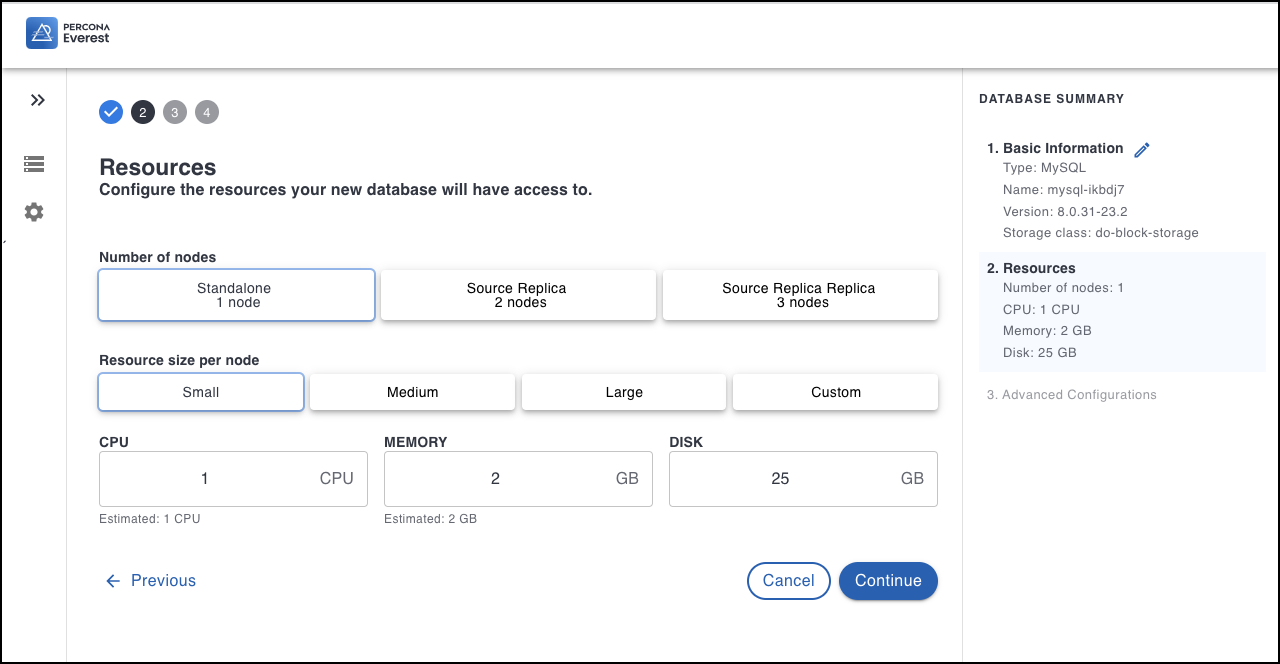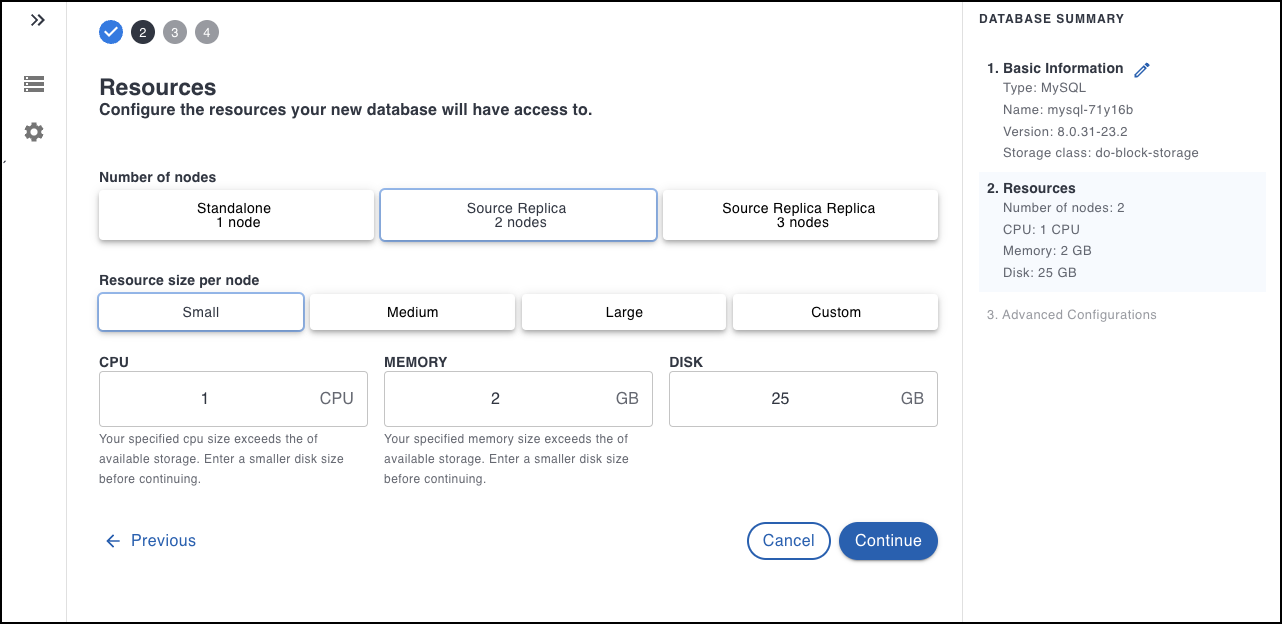Scale database deployment¶
Manual scaling in Percona Everest allows for easy adjustment of database capacity and performance to meet the changing demands.
Vertical scaling¶
Vertical scaling is essential for addressing increased workloads or performance demands. You can scale up or scale down as per your requirements.
-
Scale up
You can vertically scale up your Percona Everest instance by modifying its configuration to a higher performance tier. This involves increasing the memory and/or CPU threshold.
Example
For optimal cluster performance, select Large as the Resource size per node when creating a database cluster. It has higher preset thresholds for CPU, memory, and disk as compared to Small.

-
Scale down
Similarly, you can scale down (downsize) your database instance when the resource requirements decrease, which can help optimize costs.
Example
If performance is not a criterion and resource requirements are low, opt for Small as the Resource size per node when creating a database cluster. This option has lower preset thresholds for CPU, Memory, and Disk compared to the Large.

Horizontal scaling¶
To scale Percona Everest horizontally, add database nodes to the existing cluster. These nodes share the workload, distributing queries and transactions more evenly, which can lead to improved performance, availability, and database resilience.

How to scale your database instances¶
To scale your database instances:
- From the
Percona Everest Homepage, click on the three dots next to the database that you want to scale. A list of actions will be displayed. - Click Edit.
- Navigate to the Resources page.
- Select the Number of nodes.
- Select the Resources per node. When selecting the Resources per node, the threshold values are automatically populated in the CPU, MEMORY, and DISK fields.
-
Click Continue until you reach the page where Edit database option is seen.
-
Click Go to list of my databases.
-
Click on expand next to the database that you edited. You can see the resources that you allocated for your database.

Get expert help¶
If you need assistance, visit the community forum for comprehensive and free database knowledge, or contact our Percona Database Experts for professional support and services.